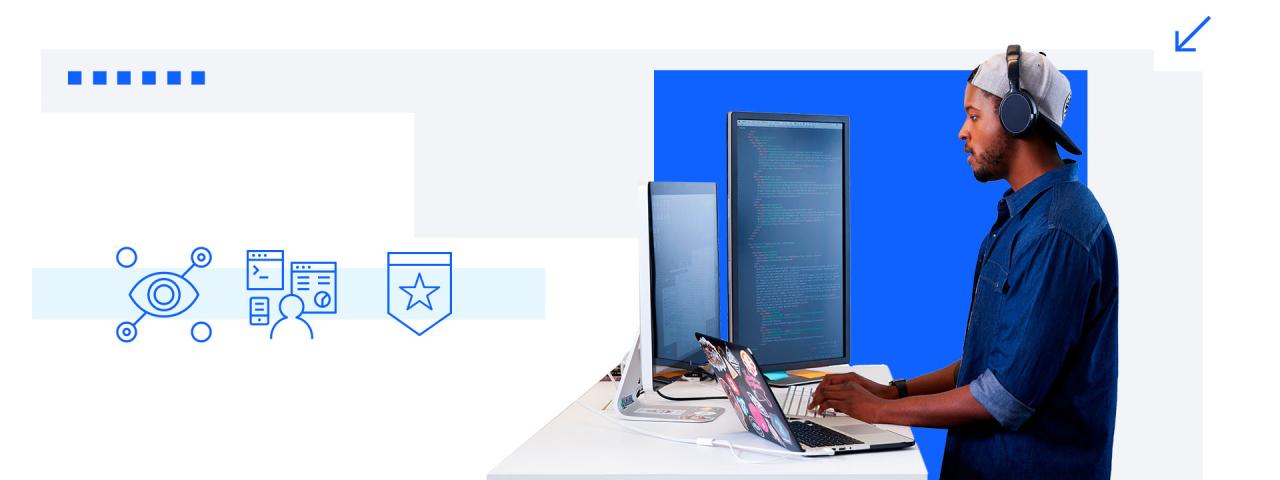IBM Is Equipping the Next Generation of Student Developers Across Universities With AI Skills
By Justina Nixon-Saintil | VP, CSR and Chief Impact Officer
Published 03-07-25
Submitted by IBM

IBM has been working with universities for almost a century. Today, we’re excited to share the new IBM SkillsBuild university strategy to strengthen AI education in universities, helping them cultivate talent among future developers, and drive economic growth worldwide.
Today’s skills gap presents an obstacle to innovation and economic development. The demand for AI skills is a top priority for companies, universities and learners, due to mass adoption of AI, the rise of open-source AI models available for the general public and the new proliferation of AI assistants and agents. In fact, the latest Future of Jobs report from the World Economic Forum shows that the skills gap remains the most significant barrier to business transformation, and that by 2030, 39% of current skills may become outdated. Developers face a similar challenge according to recent research from IBM and Morning Consult. For example, 76% of developers surveyed say they don’t consider themselves to be experts in generative AI. This trend is likely to continue and the skills gap would grow at the same accelerated pace. To foster the technical talent needed to fuel open innovation and drive business results, we need to invest in the skills of our future workforce.
How can IBM support students and aspiring developers? In 2023, IBM announced a commitment to providing free AI training to 2 million learners worldwide over three years. When we undertook this work, we knew that different groups of learners would have different needs, and that cross-industry alignment on how to approach this global challenge would be required. To help address this, we co-created an AI competencies guide through the AI Alliance. We worked to collect data, generate insights, and align on recommendations to define the essential AI competencies across key sectors and roles, as well as a defined range in levels from fluency, to proficiency, to expertise, and finally mastery.
Building on this AI Alliance framework guidance, we have created a new strategy to help university students and aspiring developers build the AI competencies that will help them thrive. The key elements of this work are faculty training, online learning, hands-on labs, group innovation challenges, as well as practical real-world learning opportunities. Each of our student-facing offerings is developed for key personas, to respond to their needs and help them build their AI competencies to reach their goals, and all are available through our IBM SkillsBuild program.
- Faculty Training: Our starting point to deepen IBM’s relationships with universities is connecting with professors to offer AI training and resources that can help them cultivate their students’ abilities. This approach multiplies the impact of our training, helping us reach a much wider audience of learners. To this end, we’re rolling out enhanced training for professors with new coursework on generative AI. Meanwhile, we will also provide faculty at select universities with access to IBM solutions like watsonx, (our portfolio of generative AI products) and Granite (our family of open-source large language models (LLMs)). The additional guidance and support from IBM experts will offer professors more options to incorporate advanced AI learning into their curriculum.
- New free generative AI courses for beginners: We heard from many students that they’re curious about how AI will shape their futures and are looking for a place to begin their AI exploration. To help address this need, for students enrolled in any university program across any discipline, we are offering new, free online courses that can help them explore generative AI. Whether they’re aspiring developers or plan to pursue tech-adjacent or any other field, these future decision-makers can benefit from short form coursework that provides a foundation of AI understanding and an introduction to generative AI technologies. These courses are about 1 hour each and include topics like exploring text to speech; building a chatbot; and an introduction to open-source LLMs. For those students who may not know where to start or need additional support, IBM SkillsBuild is also hosting on-campus activation events to guide and help them complete these courses, and celebrate their new skills. Are you a university student? Start today.
- Hands-on labs: Students who are studying computer science, IT, or a tech-adjacent field at the university level are generally more interested in a deeper-dive into AI learning with interactive components. These students may be aspiring developers who like to try out new technologies and build applications. For them, we will be offering hands-on labs to help them develop their AI expertise. These interactive exercises are up to 90 minutes in length and will help students dive deeper into topics like code generation and data classification using LLMs, like IBM Granite. Students will also have the opportunity to earn digital credentials that are recognized by future employers.
- Capstone projects and group innovation challenges: IBM is making watsonx available to selected universities for students to build real-world solutions. This offering will be targeted to advanced technical undergraduate or graduate students. These students will have the opportunity to work with IBM experts and their classroom professors, to build innovative capstone projects over the course of a semester. IBM mentors will equip the students with problem statements, including some from IBM clients, which could span different industries such as financial services, healthcare, insurance, life sciences, manufacturing, telecommunications, marketing or energy. Groups of students at this level could also participate in innovation challenges, like hackathons, which are short-term experiences that give groups of aspiring developers the opportunity to use generative AI and LLMs, like Granite.
Results of our pilots around the world:
As we’ve piloted this approach around the world, we have already seen some early success stories. For example, through IBM SkillsBuild, two teams of university students in Boston built a chatbot using IBM’s generative AI technology. The tool aims to help students explore if their work outside the traditional college environment could be applied for college credit. Additionally, students in India have built watsonx solutions focused on the legal profession, farming, and nutrition. And in the UK, we worked with a team of students who built a disaster-response robot using IBM’s AI and data platform technology. Equipped with advanced sensors and a virtual assistant, built from scratch using IBM watsonx, the robot would assess its environment, identify obstacles, connect with individuals on the ground, and send important information back to rescue teams, making it a valuable asset during critical moments.
Looking ahead:
The pace of AI innovation continues to challenge and inspire businesses across industries, making skilled talent even more important than ever. As we see the rise of more open-source AI models, it’s clear that the pace of transformation is not slowing down. The future of AI will be shaped by students, educators, and professionals who not only have the skills to use generative AI, but also to manage AI agents, or even build them.
In the months ahead, we’re excited to expand our work with more schools and learners across disciplines to build AI skills. We will continue to:
- enhance our resources for university faculty, including opportunities to connect across the faculty community,
- expand our catalog of new AI coursework for students, and
- connect with teams across universities to build new innovative AI and open source solutions.
Together with universities and our network of IBM SkillsBuild partners, we are investing in the pipeline of technological talent for our future, and preparing them for the marketplace.
If you’re a student, visit the IBM SkillsBuild site.
If you’re a university or faculty and would like to participate or learn more, please visit https://skillsbuild.org/organizations-supporting-college-students/interest-form.

IBM
IBM
Innovation – joining invention and insight to produce important, new value – is at the heart of what we are as a company. And, today, IBM is leading an evolution in corporate citizenship by contributing innovative solutions and strategies that will help transform and empower our global communities.
Our diverse and sustained programs support education, workforce development, arts and culture, and communities in need through targeted grants of technology and project funds. To learn more about our work in the context of IBM's broader corporate responsibility efforts, please visit Innovations in Corporate Responsibility.
More from IBM

